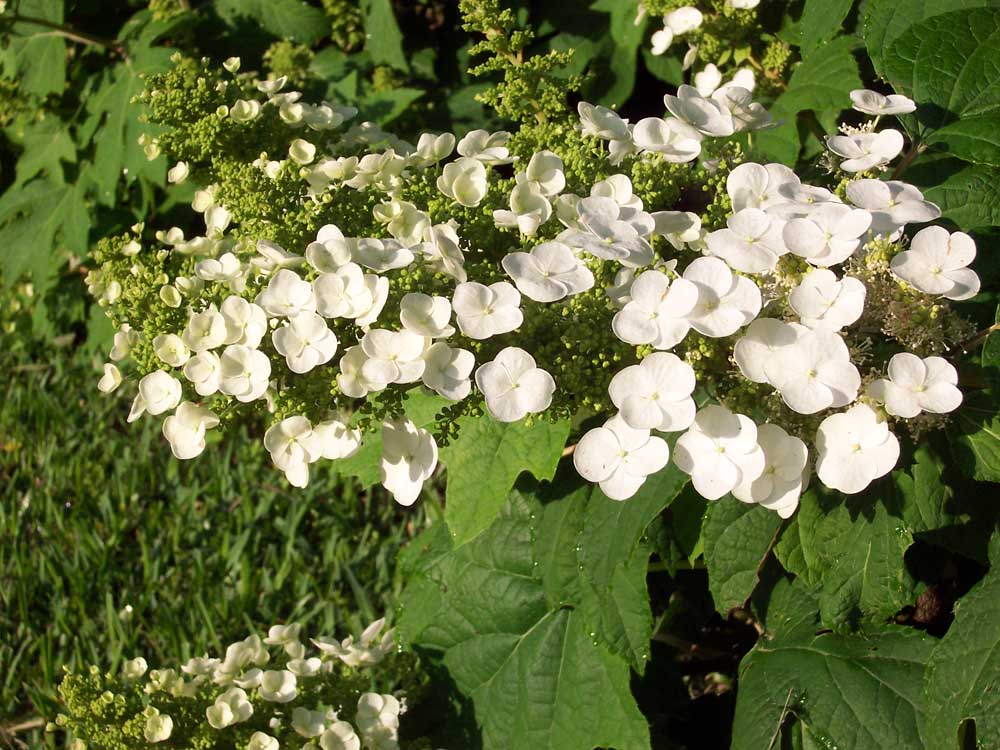Hortensias are most common type of hydrangea in East Texas gardens
Published 7:35 pm Saturday, June 5, 2021

- Oakleaf hydrangeas produce beautiful, fragrant, white flowers.
My grandfather Emanis’ favorite plant was the big blue hydrangea near the end of his porch, by the swing. Now that my grandparents are gone, I’ve grown to cherish hydrangeas as well.
The common, showy shrub we call the “French” hydrangea is not from France. In fact, Hydrangea macrophylla is a native of Japan. The French were responsible, however, for much of its breeding around the turn of the last century. The results have been divided into two distinct groups, the hortensias (mopheads) and the lacecaps. The two types of macrophylla hydrangea are easy enough to distinguish. Hortensias bear clusters of showy mostly sterile flowers, which give them their large “mop head” look. Lacecaps have a center of nonshowy fertile flowers surrounded by a ring of showy sterile flowers. There are many cultivars of both types, but hortensias are by far the most common type of hydrangea in East Texas gardens, and are also popular as a source of fresh and dried cut flowers.
The first hydrangea in the South, if not in Southern gardens, was H. quercifolia, the oakleaf hydrangea, a native of the southeastern U.S. This plant was named by William Bartram and introduced into English gardens in 1803. In addition to the fragrant, showy, white flowers it bears in summer, this shrub’s foliage colors well in the fall. The most beautiful specimens I’ve ever seen are at the Birmingham Botanical Garden. There are a number of cultivars of oakleaf hydrangea available today including one with double flowers, a number than age to pink, another with golden foliage, and even a dwarf one. They all make spectacular specimens in partly shaded gardens and like all hydrangeas, produce beautiful cut flowers, either fresh or dried.
Hydrangeas require a loose, well-drained organic soil and plenty of moisture to thrive.
They typically need one inch of irrigation every week or two during the months of June, July, and August and are prone to wilting on hot summer days. Try not to wet the foliage as some cultivars are prone to leaf spot diseases. They should be lightly pruned back annually to keep them from looking “messy,” but make your cuts right after blooming, for pruning later in the season, especially in wintertime, removes the buds that make the following season’s flowers.
There are newer cultivars that bloom on new wood as well as old, but I’d still prune them after their blooms fade and not during the winter except for tidying up loose ends.
Most mop head hydrangeas are unique in that they serves as a sort of living litmus paper; acidic soils cause them to bear blue flowers, while more alkaline soils turn the flowers pink. Shades between the two are often seen as well. Aluminum sulfate, a soil acidifier, may be added to the soil to obtain blue flowers, and lime may be added to create pink ones.
Greg Grant is the Smith County horticulturist for the Texas A&M AgriLife Extension Service. He is author of Texas Fruit and Vegetable Gardening, Heirloom Gardening in the South, and The Rose Rustlers. You can read his “Greg’s Ramblings” blog at arborgate.com, read his “In Greg’s Garden” in each issue of Texas Gardener magazine (texasgardener.com), and follow him on Facebook at “Greg Grant Gardens.” More science-based lawn and gardening information from the Texas A&M AgriLife Extension Service can be found at aggieturf.tamu.edu and aggie-horticulture.tamu.edu.






